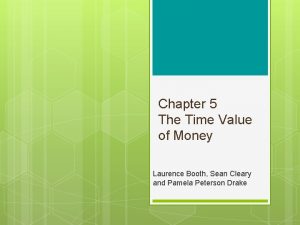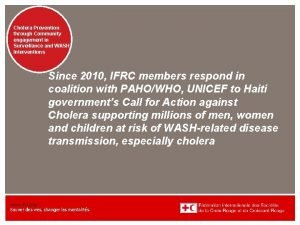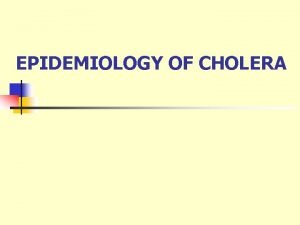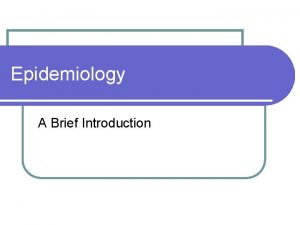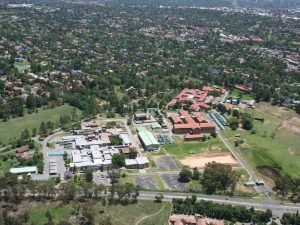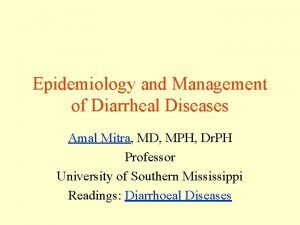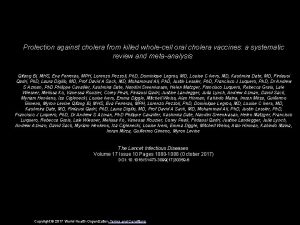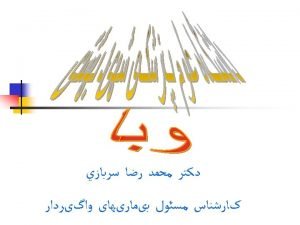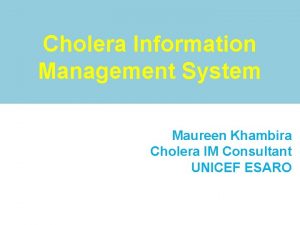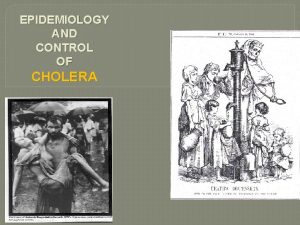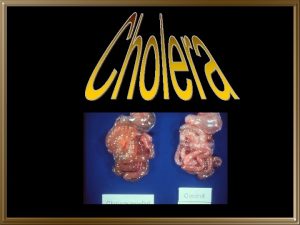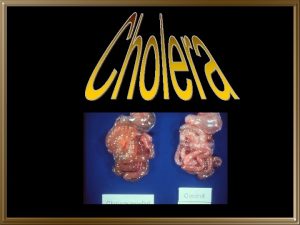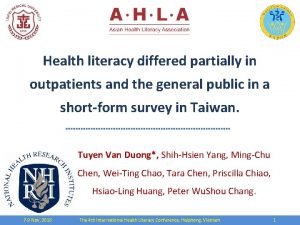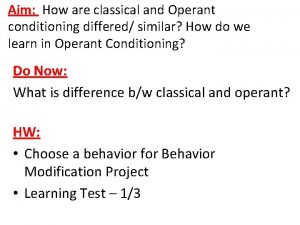The seventh pandemic of cholera differed from the



























- Slides: 27


• The seventh pandemic of cholera differed from the prior six. This pandemic was caused by the biotype El Tor of V. cholerae O 1, a biotype that had been isolated for the first time in Egypt at the beginning of the century and was associated with sporadic cases until 1961. In 1961, the pandemic originated in Indonesia, instead of the Indian subcontinent, was then spread out as follows.



Nature


• Specific adherence of V. cholerae to the intestinal mucosa is probably mediated by long filamentous fimbriae that form bundles at the poles of the cells. • The powerful enterotoxin then released is a protein consisting of an active (A) subunit and five binding (B) subunits.


This results in an increased level of intracellular c. AMP leading to an increase in intestinal chloride secretion and a decrease in sodium chloride absorption. The outcome is a passive watery excretion that leads to diarrhea. The volume typically exceeds 1 liter per hour in adults and 10 ml/kg per hour in children. The result of these events is the production of watery diarrhea with electrolyte concentrations similar to those of plasma, as shown in Table:

• Patients look anxious and restless, the eyes are very sunken, mucous membranes are dry, the skin has lost its elasticity and when pinched skin retracts very slowly, the voice is almost non audible, and the intestinal sounds are prominent. A Peruvian patient with severe cholera. Sunken eyes and washer woman’s hands are typical of patients with severe dehydration.

















 A salaried worker in a guild
A salaried worker in a guild The spoils system made political parties more powerful by
The spoils system made political parties more powerful by Bebop differed from swing in that
Bebop differed from swing in that A salaried worker in the guild system
A salaried worker in the guild system Differed annuity
Differed annuity Who pip framework
Who pip framework Voice level 0
Voice level 0 Cholera
Cholera Cholera toxin
Cholera toxin Cholera
Cholera Endemic definition in community health nursing
Endemic definition in community health nursing Cholera outbreak malaysia
Cholera outbreak malaysia Stool dr test
Stool dr test Pandemic tabletop exercise template
Pandemic tabletop exercise template Cholera
Cholera Cholera is a greek word that means gutter of roof
Cholera is a greek word that means gutter of roof Cholera
Cholera Cholera
Cholera Cholera classification
Cholera classification Mathalicious pandemic answer key
Mathalicious pandemic answer key Covid 19 pandemic summary
Covid 19 pandemic summary Cholera
Cholera Who pandemic phases
Who pandemic phases Types of cholera
Types of cholera 7th commandment worksheet
7th commandment worksheet At the seventh sprint review the stakeholders
At the seventh sprint review the stakeholders Seventh normal form
Seventh normal form The seventh man characterization
The seventh man characterization




